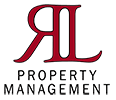 Understanding the cash flow potential of a rental property in Franklin County requires you to make several assumptions about income and expenses. Predicting income is a relatively straightforward process as there is generally just a single variable contributing to income – the monthly rent you charge.
Understanding the cash flow potential of a rental property in Franklin County requires you to make several assumptions about income and expenses. Predicting income is a relatively straightforward process as there is generally just a single variable contributing to income – the monthly rent you charge.
Identifying potential expenses, on the other hand, can be a bigger challenge. While we cannot offer a straightforward formula for estimating maintenance costs and other expenses, there are some smart ways to think about maintenance costs when trying to predict a property’s cash flow potential.
First, a Word of Caution
First-time property investors often ask if there is a rule of thumb for calculating maintenance costs. One idea some have is to budget 10% of the rental cost toward maintenance, but we caution you here. Why? The problem with this line of thinking is that maintenance costs are completely unrelated to the rent.
For example, the cost to replace a water heater is roughly the same whether you’re charging $800 or $3,500 for rent. While, yes, the upfront finishes may have cost more on the $3,500 rental property, the ongoing maintenance for the two properties is not that different. So, when you’re trying to predict ongoing operating costs for a property, using the percentage of rent is generally not a good rule of thumb for this reason.
Another rule of thumb some investors use to estimate maintenance costs is to use a dollar-per-square-foot measure. While this may get you closer to actual costs, it can still cause problems, especially if you have a bigger home.
Strategic Ways to More Accurately Predict Operating Costs
Rather than the size of the home or how much you’re charging for rent, here are some factors that really drive maintenance expenses in an investment property:
- The home’s age
- Its mechanicals and what kind they are
- The number of bathrooms (as they have more electrical and plumbing relative to a bedroom)
- The current age of the long-lived items at the property, including its roof, windows, siding, etc.
These expenses can be difficult to predict, but they are the types of things property owners should be thinking about as they evaluate maintenance expenses on a potential investment property in Central Ohio.
Don’t Forget to Account for ”Sweat Equity”
Another expense that can be easy to forget about or ignore in calculations is things property owners do themselves. Expenses like mowing the grass, clearing snow, and other maintenance-like tasks and repairs on a property cost money. Even if you are doing the work yourself, it’s not “free.”
When owners complete maintenance tasks on their property, we sometimes call this “sweat equity withdrawal” because they are essentially paying themselves to mow the grass. Whether you do the work yourself or pay someone else to take care of it for you, this is an expense that needs to be included in expense calculations for maintenance.
Contact Us at RL Property Management to Ask Your Questions
Rental property ownership comes with a long list of idiosyncratic repairs. This makes it difficult to apply a general rule of thumb for estimating costs. Instead, we recommend considering your unique property as you make educated assessments about its current condition and future costs.
To learn more about owning and investing in a rental property in Franklin County, contact our team at RL Property Management.
